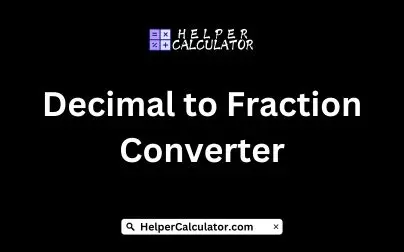A Decimal to Fraction Converter is a tool or algorithm that converts a decimal number (whether it's terminating or repeating) into its equivalent fraction form. The converter performs the conversion by applying mathematical steps to express the decimal as a ratio of two integers (numerator and denominator).
Key Concepts and Process:
1. Terminating Decimals: If the decimal has a finite number of digits (like 0.75), the converter multiplies both the numerator and denominator by a power of 10 (based on the number of decimal places) to convert it into a fraction.
- Example: 0.75 = 75/100 = 3/4
2. Repeating Decimals: If the decimal repeats (like 0.666... or 0.6 bar), the converter uses algebraic methods to express the repeating part as a fraction.
- Example: 0.6 bar = 3/5
3. Handling Precision: For decimals with a long or infinite sequence, the tool may need to round or estimate to a certain number of decimal places based on user input.
Benefits:
- Accuracy: Converts decimals to their simplest fraction form.
- User-friendly: Helps users who need fractions in calculations or other mathematical processes.
- Versatility: Works with both terminating and repeating decimals.
Applications:
- Mathematics education for understanding the relationship between decimals and fractions.
- Financial calculations where precision in fractions is required (e.g., interest rates, investment returns).
- Science and engineering fields where exact ratios are necessary.
In short, a Decimal to Fraction Converter simplifies the process of converting decimal values into fractions, helping with both simple and complex decimal-to-fraction conversions efficiently.
Decimal to Fraction Converter
Tags:
Unit Conversion Tools
